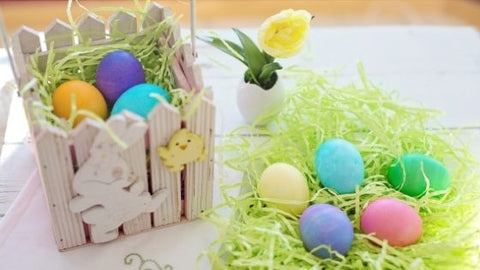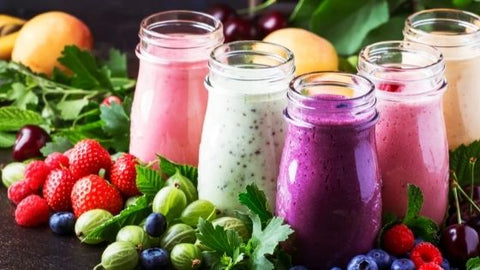The custom of giving eggs at Easter celebrates new life. The precise origin of the ancient custom of decorating eggs is not known, although evidently the blooming of many flowers in spring coincides with the use of the fertility symbol of eggs and eggs boiled with some flowers change their color, bringing the spring into the homes.
Easter Egg Dye Recipe
It is fun and easy to use these natural dye made from household ingredients to create beautiful Easter eggs. Before you start wash your eggs gently. There are generally two ways to dye eggs, either to boil them with the dye or to dye them after they eggs have been hard-boiled. We prefer option one as it is much faster.
Bring water and the desired coloring agent to a boil and add 2 table spoons of white vinegar per liter to it. Boil your dye mixture for approximately 10 to 15 minutes on low temperature. The dye is ready when you are happy with the desired color. You need to use your own judgment about exactly how much of each dye ingredient to use. A general rule of thumb is the more you use the richer the color. Your dye should be a few shades darker than you want your eggs to be. Once your dye mix is ready, boil your eggs for approximately 10 to 15 minutes to absorb color.
Color & Ingredients To Choose
Rich Brown: Yellow Onion Skin, Brewed Black Tea or Coffee, Instant Coffee
Pink & Purple: Red Cabbage, Beet Root Juice, Cranberry Juice
Blue: Canned Blue Berries, Purple Grape Juice
Yellow: Turmeric, Saffron, Chamomile Tea, Green Tea
Orange: Paprika, Chili Powder, Carrots
Green: Spinach
Eggs colored with natural dyes do not have a glossy finish. To add some shine rub them with cooking oil after the eggs are dry. Now your eggs are ready for the Easter egg hunt.
Like it? Share it!




